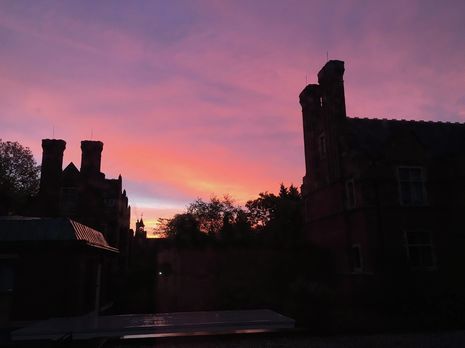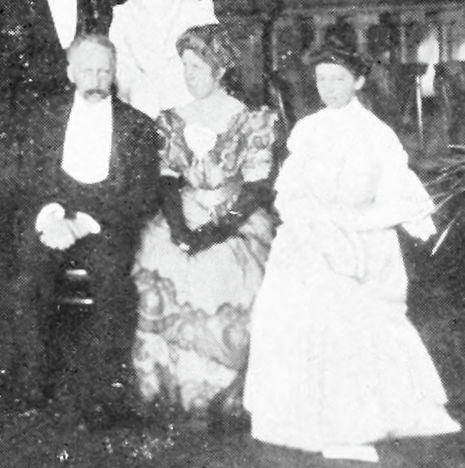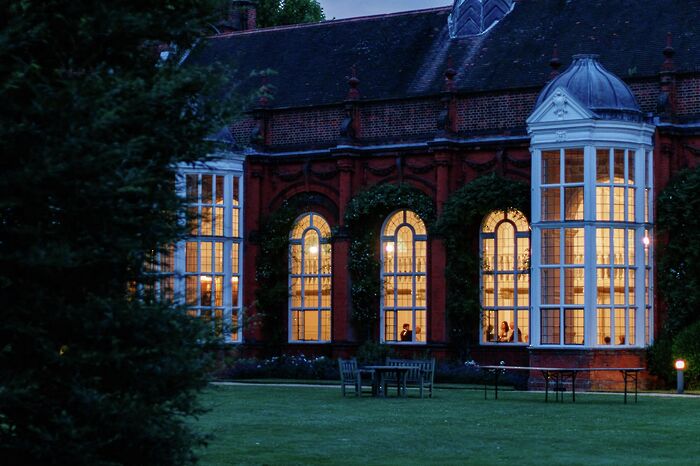The Newnham College Mendelians
Jasmine Charles shows the history of genetics in a new light, populated by women like Edith Saunders and Florence Durham of Newnham College, Cambridge.

The names that, for most, are synonymous with genetics itself include Gregor Mendel, William Bateson, Reginald Punnet, James Watson and Francis Crick. As with much of science history, it’s not hard to notice the common masculine theme. The fact that many of these names were Cambridge men was proudly noted on the front cover of my Genetics handout, but with half the attendees being female, the overarching male theme that would continue for another 5 lectures was tiresome and a let down to us all. Little did we first year scientists know that genetic research (indeed, the origin of the word “genetics” itself) not only took root in Cambridge but in the gardens of Newnham College with its apparently unremarkable female Natural Sciences graduates.
The overlooked nature of the accomplishment of women across all subjects is not a surprise given their historical position in society. The idea of women in science made men so uneasy that the first female scientists to sit the Natural Sciences Tripos at the University were required to attend lectures without men, were refused the rights to work in male-run laboratories or to gain a degree (the rejection of Degrees for women in 1897) despite often outperforming their male counterparts in Tripos examinations. This hostile environment meant William Bateson’s plea for accomplices in the research of genetics was the perfect opportunity for women to carry out postgraduate study.
Bateson was researching the internal mechanisms of variation (a subject not entirely welcomed by the traditionalist views of the University) by undertaking hybridisation experiments, requiring assistance in the field that male co-workers did not appreciate. Edith Saunders, a well-established Newnham botanist, formed a partnership with Bateson. She investigated whether hairy or smooth leaves in Biscutella laevigata were inherited discontinuously or, over generations, tended towards a mean mixed phenotype, thus leading the way for Bateson’s butterfly cross breeding experiments.
“This makeshift nature of the Newnham Mendelians highlights the sidelining of women in science and the misattribution of the field of genetics to solely male scientists.”
Both sets of results returned inconclusive and no explanation could be found for this until the rediscovery of Mendel, who provided them with his tools of statistical analysis. This inspired the pair to expand their hybridisation experiments and primarily recruit Newnham students to help. Saunders went on to validate Mendel’s results by repeating his experiments with Atropa and Datura, publishing her results in reports to the Evolution Committee of the Royal Society (1902) and introducing terms like allelomorph (now ‘allele’), homozygote and heterozygote.
Saunders is not the only female geneticist deserving of appreciation, of course. The sheer number of women working with huge variety in genetics is pointed out by Beatrice Bateson:
“Besides the work in our garden and barns, enthusiastic pupils had begun to experiment. Miss E. R. Saunders continued the plant-breeding… Miss Sollas reared guinea-pigs in a field behind Newnham College; Miss Killby goats. Miss Wheldale worked on flower-colours in Antirrhinum…Miss Durham hybridised mice in a kind of attic over the Museum.”

This makeshift nature of the Newnham Mendelians highlights the sidelining of women in science and the misattribution of the field of genetics to solely male scientists. With the perseverance of any truly dedicated scientists, they were willing to persist with lack of funding and backing by the University.
Two experiments by Newnham Mendelians stand out the most. Saunders, through her experiments with Matthiola, was able to explain the heredity of the linked characteristics of flower colour and hoariness of leaves by suggesting the “surface character is dependent on flower colour… [in a] system of inter-relationships”. This discovery was lauded by plant geneticist Erwin Baur with Bateson regarding her as his “colleague” and “a name so deservedly honoured tonight” at the 1906 International Conference of Genetics. Using Saunders’ inter-relationships, Florence Durham explored the dominant relationships present in determining coat colour of mice, concluding that a 3-gene combination produced various coat colours, though the presence of a fourth governed whether or not coat colour is expressed at all, thus introducing the theory of epistasis (the interaction of two nonallelic genes where one masks the phenotypic expression of the other), now foundational in evolutionary genetics.
I wish I could conclude that this outstanding contribution of Newnhamites to the development of genetics elevated their eligibility as scientists. Unfortunately, in 1908, Bateson left Cambridge, taking with him all the support and encouragement of female education. His departure was soon followed by the closure of the only female laboratory in Cambridge and the failure of a second Degrees for Women campaign in 1921 (only to be successful in 1947). The sad truth was that these women worked in a highly misogynistic environment in which only some, like Saunders, recognised for their work in collaboration with a male mentor and never in their own right; ironically, like a recessive allele overshadowed by the dominant
 News / Uni Scout and Guide Club affirms trans inclusion 12 December 2025
News / Uni Scout and Guide Club affirms trans inclusion 12 December 2025 News / Cambridge Vet School gets lifeline year to stay accredited28 November 2025
News / Cambridge Vet School gets lifeline year to stay accredited28 November 2025 Science / Did your ex trip on King’s Parade? The science behind the ‘ick’12 December 2025
Science / Did your ex trip on King’s Parade? The science behind the ‘ick’12 December 2025 News / Cambridge study finds students learn better with notes than AI13 December 2025
News / Cambridge study finds students learn better with notes than AI13 December 2025 News / Pembroke to convert listed office building into accom9 December 2025
News / Pembroke to convert listed office building into accom9 December 2025








